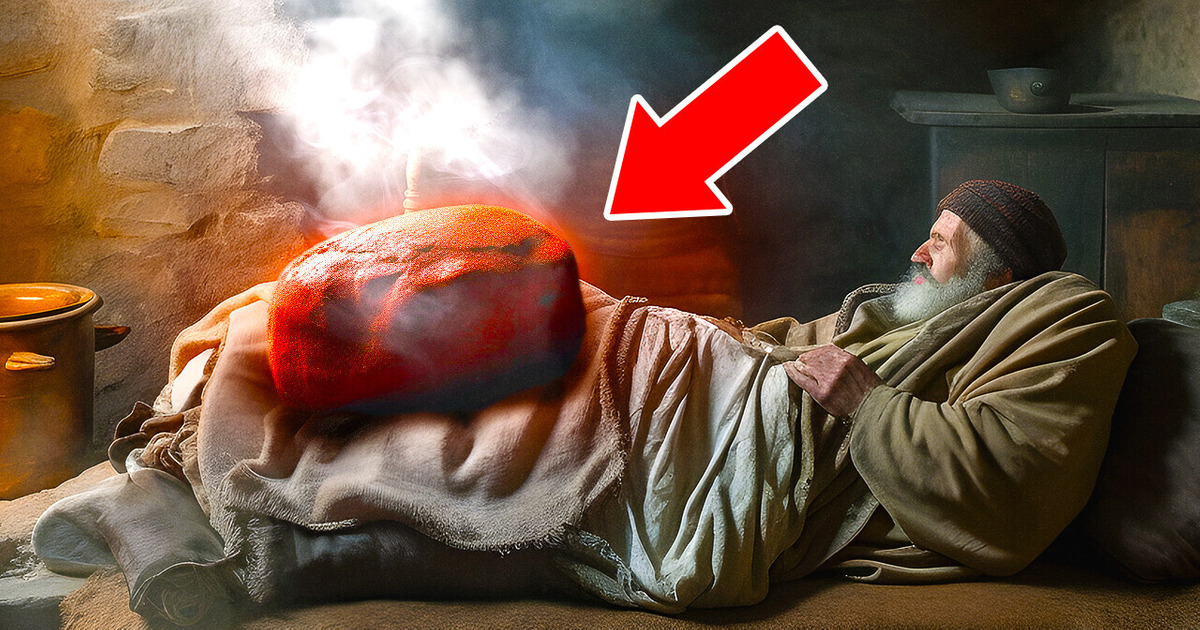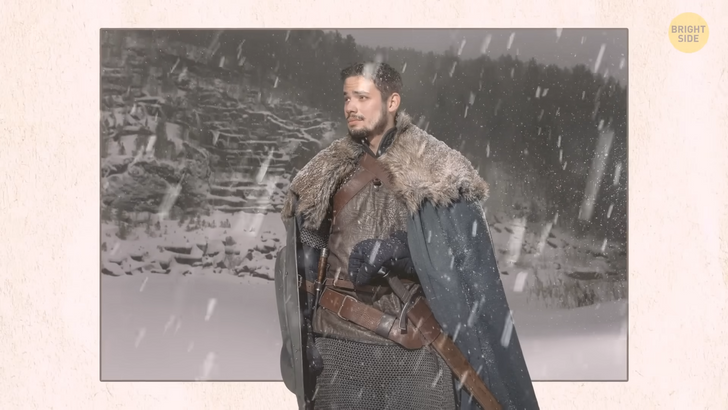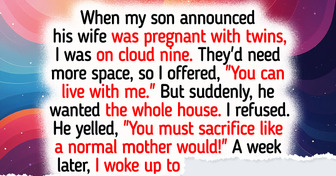I Refuse to Sacrifice My Health to Keep My MIL Happy, I’m Her DIL, Not a Speechless Doormat


It is a snowy winter night. You are inside your cozy house and watching a historical movie that takes place during the Middle Ages. As you take another sip of your hot chocolate, you can’t help but wonder how the people survived the winter back then. At that exact moment, your TV’s screen suddenly turns into a portal and pulls you inside...
“Aaaaah!” You open your eyes to find yourself within the world of the movie you were just watching. A man approaches you and says, “Welcome to my medieval village! I’m Bartholomew, and I called you here to give you an answer to your question!”

“First of all, let me tell you that conditions become extremely harsh when the cold arrives, and not just for the northern countries. Mainland Europe takes its share of the brutal weather, too. So, winter is kind of a ‘slowing down’ time for all of us.
You see, we usually associate winter with old age and poverty because of all the changes that occur in nature during this time. For example, we can’t really grow any crops when snow covers all our land. And by the early fourteenth century, things started to get even worse because we started seeing the first signs of what you may know as the ‘Little Ice Age.’
Cold temperatures peaked. Weather anomalies and extreme events such as sudden floods or hail storms started to occur, which added to our agony. Take the winter of 1359, for instance. Across central Italy, the snow rose to extraordinary heights. People had to throw the snow into the streets to lighten up their roofs, and because of that some towns were completely blocked.
Their inhabitants were trapped in their homes for several days! Another example of this is the winter of 1389. The snowfall was so great in the Lozère region of France, that many people’s farmsteads and houses were destroyed.” Bartholomew notices that you start shivering...

“Ah! You were not prepared for this journey back to medieval winters, I see... Let’s walk to my home and find you some warmer clothes. As you can see, I’m already wearing a cloak, a scarf, and mittens which are all made out of wool. I also have boots that are made out of leather from a deer. Still, all these are not really enough to stay warm when one is outside.
That’s why we usually layer other clothes underneath them all to keep the warmth trapped. By the way, the wool can get heavy and itchy sometimes. So, beneath our woolen outer clothing, we wear linen undergarments, too. The linen acts as a barrier between the wool and the skin, therefore making things a bit more comfortable for us. It is also easier to wash linen clothes, and they dry way faster than woolen ones.
The wealthier ones can line their winter clothing with fur. And us regular peasants sometimes use rabbit and lamb for the same purpose. It’s not as glamorous, but still effective... We can also hunt some wild animals and birds with the permission of the lord.
Yet again, the sumptuary laws, in other words, consumption laws, are very clear on who can wear what according to their social standing. Take the 1363 English sumptuary law, for example. It states that the wives and daughters of craftspeople and land-owning peasants were only allowed to wear lamb, rabbit, cat, and fox furs.”

You notice a weird-looking, hinged metal sphere in Bartholomew’s pocket and ask him what that is. “It’s a hand warmer,” he says as he gives it to you. “If we are going to be outdoors for a long time, we bring one of these with us. Otherwise, one’s fingers can get numb, you know... Now, take a closer look at it, and you’ll see that it has tiny holes on its surface. This helps the heat to escape so that we can warm our hands without burning them once we fill it with hot coal.”
“That’s kind of heavy,” you say and think about how lucky you are to be living in modern times. With just one click from the comfort of your home, you can order Hot Hands instant hand warmers from Amazon. And no coal is necessary!
You can even put those inside your shoes to warm your toes since they are pocket-sized, unlike this metal orb... You and Bartholomew arrive at his house. You realize that he does not take any of his outer garments off. “We keep everything on during the coldest months because the indoor heating isn’t always great,” he says.
“As you can see, the fireplace stands here at the center of our homes. And right above it, there’s a ventilation hole rather than a chimney, which causes us to lose so much of the heat... Yet again, we don’t usually sleep in our outside clothes. Instead, we put bricks and stones in the fire, wrap them in fabric, and take them to our beds to warm the sheets. Wearing our nightcaps all night long also helps. And when we’re not sleeping, we usually try to stay close to the fireplace as much as possible.”

You sure appreciate that hot water bottle of yours more now, right? And you didn’t even need to cover it with a cloth like these folks have to do... It already came with a knit cover for your convenience! And the best part is, it’s much softer than a brick and can be heated in the microwave within seconds! “How rude of me! I forgot to offer you something to eat,” Bartholomew says.
“I know I already told you winter means stillness for us, but we still need to put in some work to not starve... There’s a lot of preparation to be done in advance to survive these medieval winters. First of all, we start gathering wood for the fire from as early as spring and through the summer. Then there’s the food we harvest in the fall. We have to preserve that in a special way, so all will last over the winter months. The same thing goes for meat, too.
The methods we use include pickling, drying, and brining. In terms of grains, cereals, and pulses, we dry them out and store them in ceramic or clay pots. We later use them for making potted stews and soups in addition to vegetables. Basically, everything we can find goes into the pot!
The most common foods we eat in our everyday lives include onions, peas, beans, lentils, and herbs such as parsley. We still have to include protein in our diet, though. And we do that by eating cheese, eggs, fatty bacon, or salted pork. In terms of fresh fruits and berries, they are hard to find during winter time, so we preserve the ones we already picked by the air drying method, too.”

You think to yourself, if only these people had a food dryer at home, their lives would be so much easier. They could use it for all the foods Bartholomew just mentioned, from fruits to meat... Then again, there’s no electricity here...
“I wouldn’t want you to think winters are so grim, long, and boring after everything I’ve told you. We still do plenty of activities to keep ourselves entertained,” Bartholomew says. But what? It’s not like they can binge-watch their favorite TV shows...
“We play in the snow a lot, adults and children, all together! You can see plenty of peasants ice skating on the frozen lakes. To be able to do that, we used to use pieces of polished wood or horse shinbones. But now we have iron skates, too. I need to mention though, here in Western Europe ice skating is not as common as in Scandinavia. That is because they are more accustomed to snow and cold temperatures. Sledding is another fun activity we do!”

“Then there are indoor games such as chess, backgammon, and other dice games. Wool spinning and telling stories are also common ways to spend some nice time with our family. Not surprisingly, nobles have more opportunities in the entertainment area, too. For example, boar hunting is very common amongst the elite.”
At that moment, a portal appears at the door. Bartholomew says, “Guess it’s time for you to head back, traveler! Fare thee well!”











